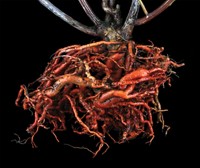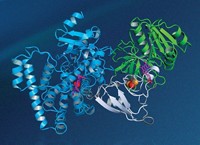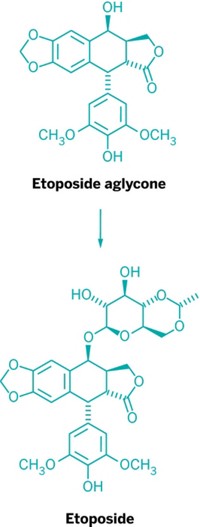Advertisement
Grab your lab coat. Let's get started
Welcome!
Welcome!
Create an account below to get 6 C&EN articles per month, receive newsletters and more - all free.
It seems this is your first time logging in online. Please enter the following information to continue.
As an ACS member you automatically get access to this site. All we need is few more details to create your reading experience.
Not you? Sign in with a different account.
Not you? Sign in with a different account.
ERROR 1
ERROR 1
ERROR 2
ERROR 2
ERROR 2
ERROR 2
ERROR 2
Password and Confirm password must match.
If you have an ACS member number, please enter it here so we can link this account to your membership. (optional)
ERROR 2
ACS values your privacy. By submitting your information, you are gaining access to C&EN and subscribing to our weekly newsletter. We use the information you provide to make your reading experience better, and we will never sell your data to third party members.
Synthesis
Lovastin-Producing Enzyme Moved To Yeast
Transplantation of fungal machinery for making cholesterol drug finally makes structural analysis of the enzyme possible
by Stuart A. Borman
October 26, 2009
| A version of this story appeared in
Volume 87, Issue 43
A multifunctional enzyme that a fungus uses to produce the cholesterol-lowering drug lovastatin has been moved into yeast, in which it is not normally found. Not much is known about the way highly reducing iterative polyketide synthases (HR-IPKSs) such as lovastatin nonaketide synthase (LovB) work. And it’s been difficult to obtain sufficient quantities from natural fungal sources to be able to learn more about their mechanism of action. So John C. Vederas of the University of Alberta, Yi Tang of UCLA, and coworkers transferred LovB from Aspergillus terreus into the yeast Saccharomyces cerevisiae (Science 2009, 326, 589). By studying purified LovB from yeast in the presence and absence of cofactors and a partner enzyme, LovC, the researchers were able to discover new details about the way LovB produces dihydromonacolin L, the substrate for lovastatin’s commercial biosynthesis. The work shows that LovB disposes of incorrectly processed intermediates as pyrones and hydrolytic products. This approach “provides a basis for understanding the programming rules of HR-IPKSs,” the researchers write.






Join the conversation
Contact the reporter
Submit a Letter to the Editor for publication
Engage with us on Twitter